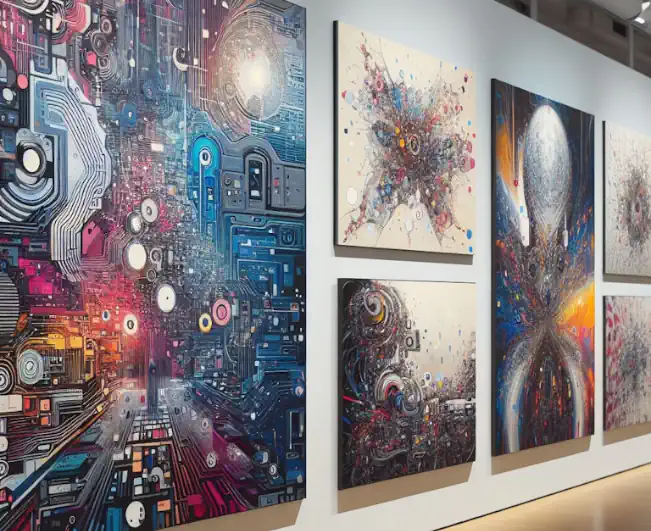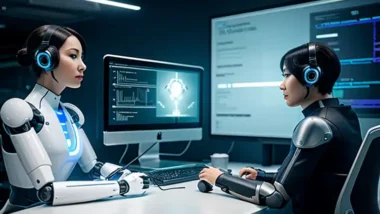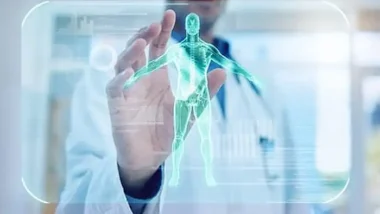Table of Contents
- 1 A Pioneering Study Challenges Assumptions
- 2 Discovering Surprising Findings
- 3 The Relationship Between Humans and Computer-Generated Art
- 4 The Influence of AI in the Art World
- 5 The Unique Impact of Human-Made Art
- 6 The Role of Context and Perception
- 7 Exploring AI-Generated Art
- 8 Implications for the Future of Art and Creativity
- 9 Expanding Boundaries of Creativity
A Pioneering Study Challenges Assumptions
A pioneering study conducted by researchers from the University of Vienna and the Humboldt University of Berlin has emerged, challenging the long-standing assumption that humans cannot form emotional attachments to computer-generated art.
Published in the esteemed journal Computers in Human Behavior, this research sheds light on the intricate relationship between humans and machines within the domains of art, design, and entertainment.
Discovering Surprising Findings
Traditionally, the emotional impact of artwork has been attributed to the human touch and intentionality behind its creation. However, this study reveals a surprising finding – participants reported stronger emotions and provided higher ratings for artwork if they believed it had been created by a person.
They tested this by showing participants visually similar abstract, black-and-white artworks. Before viewing each artwork, participants were given cues about whether it was created by a human or a computer. These cues were true in 50% of the cases. Contrary to critical suggestions, participants almost always not only reported emotions but also ascribed intentionality, independent of the cue given.
Interestingly, they did report stronger emotions when the work actually was made by a human.
The Relationship Between Humans and Computer-Generated Art
This discovery challenges the prevailing notion that people are unable to perceive emotions and intentions in computer-generated art. In fact, participants consistently experienced some form of emotion and perceived a sense of intentionality while viewing the abstract black-and-white artworks presented to them.
The Influence of AI in the Art World
In an era where computers and artificial intelligence (AI) are assuming increasingly prominent roles in the art world, profound questions arise regarding the influence of AI as a creative entity. This study delves into how humans respond to more complex artworks generated by AI, raising concerns about the future of human-computer interaction.
With AI-generated artworks fetching exorbitant prices at auctions and artists utilizing algorithms to create aesthetically pleasing content, comprehending the emotional connection between humans and machines becomes paramount.
The Unique Impact of Human-Made Art
While the study indicates that there is a subtle, yet significant, difference in emotional impact between human and artificial art, it also suggests that there are specific characteristics in human-made art that resonate with viewers.
These characteristics, such as the human touch, intentionality, and cultural context, contribute to the emotional connection formed between viewers and traditional artwork.
Exploring and comprehending these nuances can further enhance the development of AI-generated art that resonates with human emotions.

The Role of Context and Perception
The study also highlights the role of context and perception in shaping the emotional response to art, whether human-made or computer-generated. Participants were requested to rate the artworks based on several dimensions, including their personal emotional experience while viewing the pieces.
They were also prompted to indicate the emotions they believed the artworks were intended to evoke in viewers, as well as the emotions they believed the artists felt while creating them.
This demonstrates that our perception of art is not solely influenced by the artwork itself but also by the context in which it is presented and our own subjective interpretation.
Exploring AI-Generated Art
One of the primary objectives of this study was to produce computer-generated images that were devoid of human bias. By eliminating the influence of human intentionality, the researchers aimed to explore how AI-generated art could elicit emotions and be perceived by viewers.
This raises intriguing questions about the potential for AI to create art that is liberated from subjective biases, opening new avenues for artistic expression and the exploration of objective beauty.
Implications for the Future of Art and Creativity
Undoubtedly, the study conducted by the University of Vienna and the Humboldt University of Berlin has paved the way for further research in comprehending the intricate relationship between humans and machines within the realm of art. As technology advances and AI continues to evolve, it is imperative to delve deeper into how humans respond to computer-generated art and the implications it holds for the future of creativity.
Expanding Boundaries of Creativity
Art has always served as a reflection of human emotions, experiences, and intentions. Yet, with the emergence of AI and computer-generated art, our perception of creativity is being challenged. This groundbreaking study provides compelling evidence that people can forge emotional attachments to computer-generated art, underscoring the need to explore the impact of AI on the art world more extensively.
As humans and machines continue to collaborate, the boundaries of creativity and emotional connection are perpetually expanding, igniting new possibilities for artistic expression and human-computer interaction.


